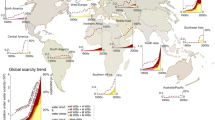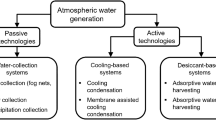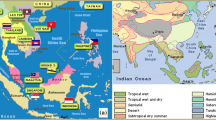Abstract
Once-through cooling systems of NPPs and TPPs have well-known advantages compared with reverse systems. Currently in Russia, their design is not allowed according to the Water Code due to environmental concerns. The basis for such a decision for condensing power stations is disputed by the professional community. The question on the abolition of this ban for NPPs and TPPs on the initiative of the Ministry of Energy of the Russian Federation is decided at the legislative level. In a separate class can be distinguished once-through cooling systems with cooling ponds of the marine type. They use the advantages connected with unlimited amount of water for cooling. The associated environment protection problems can and must be solved at the design development stage. The article discusses the issues of substantiation of their layout and parameters at the predesign stage, taking into account the requirements of environmental protection. A coupling physical and numerical modeling is proposed as a tool of computational justification. With such approach, the advantages of both the modeling kinds are used, and it becomes possible to consider the service cooling water system as a system of interconnected components. The article presents an example of hybrid modeling for elaborating measures aimed to prevent silting of the NPP water intake and water conduit structures caused by deposition of suspended drift. Prospects for application of the proposed method for justification of cooling systems as an important element in improving competitiveness and also developing the export potential of Russia’s energy complex are considered.




Similar content being viewed by others
REFERENCES
M. Murahara, “New energy source manufactured from warm seawater discharge at nuclear power plant (sodium production for hydrogen generation),” in Fuelling the Future: Advances in Science and Technologies for Energy Generation, Transmission and Storage, ed. by A. Mendez-Vilas (BrownWalker, Boca Faton, FL, 2012), pp. 429–433.
“On the possibility of using direct-flow water supply systems used for cooling purposes in the design of thermal and nuclear power plants,” Elektr. Stn., No. 12, 27–34 (2014).
http://regulation.gov.ru/projects#npa=66302
Informational and Technical Handbook on Best Available Technologies ITS 20-2016. Industrial Cooling Systems (Byuro NDT, Moscow, 2016) [in Russian].
T. Kh. Margulova, Nuclear Power Stations, 3rd ed. (Vysshaya Shkola, Moscow, 1978; Mir, Moscow, 1978).
R. Morelissen, T. Van der Kaaij, and T. Bleninger, “Dynamic coupling of near field and far field models for simulating effluent discharges,” Water Sci. Technol. 67, 2210–2220 (2013). https://doi.org/10.2166/wst.2013.081
T. Bleninger, Coupled 3D Hydrodynamic Models for Submarine Outfalls: Environmental Hydraulic Design and Control of Multiport Diffusers (Univ. Karlsruhe, 2007).
FLOW 3D. http://www.flow3d.com/home/products/ flow-3d
MIKE 11. http://mikebydhi.com/Products/WaterResources/MIKE11.aspx
I. I. Levi, Modeling of Hydraulic Phenomena (Energiya, Leningrad, 1967).
M. A. Mikhalev, Physical Modeling of Hydraulic Phenomena (Izd. S.-Peterb. Gos. Politekh. Univ., St. Petersburg, 2010).
N. V. Aref’ev, K. V. Zotov, A. M. Kazarin, M. A. Mikhalev, S. Ya. Pavlov, and V. M. Slavgorodskii, “Physical model of sediment deposition and washing in the intake structures of nuclear power plants,” Nauchno-Tekh. Vedomosti S.-Peterb. Gos. Politekh. Univ. 32 (2), 81–89 (2003).
N. V. Aref’ev, M. A. Mikhalev, K. V. Zotov, and D. K. Zotov, “Studies of deposition of suspended sediments in marine intakes of nuclear power plants using physical modeling,” Gidrotekh. Stroit., No. 1, 37–40 (2016).
D. K. Zotov, K. V. Zotov, and M. A. Mikhalev, “Device for preventing siltation of water supply facilities in cooling systems of technical water supply of nuclear power plants/thermal power plants,” RF Patent No. 184508, Byull. Izobret., No. 31 (2018).
N. V. Aref’ev, “Self-organizing numerical models of transients in water supplying hydrotechnical structures of power facilities,” Inzh.-Stroit. Zh. 41 (6), 50–61 (2013).
A. A. Girgidov, “Hybrid modeling in the design of hydraulic structures and FLOW-3D® as a means of its implementation,” Inzh.-Stroit. Zh. 21 (3), 21–27 (2011).
Author information
Authors and Affiliations
Corresponding author
Rights and permissions
About this article
Cite this article
Zotov, K.V., Zotov, D.K. Modeling Once-Through Cooling Systems of NPPs and TPPs with Marine-Type Cooling Ponds and Environmental Protection. Therm. Eng. 67, 324–329 (2020). https://doi.org/10.1134/S0040601520050110
Received:
Revised:
Accepted:
Published:
Issue Date:
DOI: https://doi.org/10.1134/S0040601520050110




